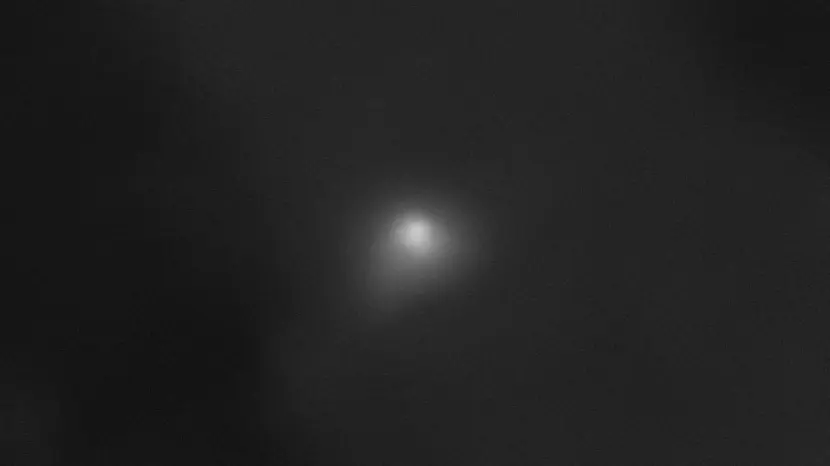NASA explains why the new HiRISE image of interstellar comet 3I/Atlas looks fuzzy while amateur astronomers capture clearer views
-
 NASA’s HiRISE camera photographs 3I/Atlas while it passes 0.2 AU from the Mars orbiter.
NASA’s HiRISE camera photographs 3I/Atlas while it passes 0.2 AU from the Mars orbiter.Many people felt disappointed after NASA's live press event, where many expected to finally see clear, high-quality images of the interstellar comet 3I/Atlas.
The release was delayed because of the government shutdown, and people waited for weeks. When the moment came, the photos that NASA shared were blurry and very basic, confusing and frustrating many sky watchers.
The comet 3I/Atlas has been in the news since its discovery on July 1, 2025, by the ATLAS observatory in Chile.
Typically, ATLAS finds asteroids, supernovas, and comets, but 3I/Atlas has clearly distinguished itself from all its previous finds. This is due to a host of peculiar features that scientists still cannot fully account for in the comet.
Harvard astrophysicist Avi Loeb has pointed out 12 unusual things about the object — things related to its path, its anti-tail, its chemical makeup, and even its possible point of origin. For those reasons, people were expecting NASA to share something big. Instead, the update felt quite basic.
Why the NASA press event felt disappointing
NASA can take these magnificent pictures of far away galaxies - but this is the best image they can give us of 3I Atlas: 🤨 pic.twitter.com/wrws3RsZxb
— AlphaFox (@alphafox) November 21, 2025NASA also showed images from several of its major space missions, such as HiRISE on the Mars Reconnaissance Orbiter, MAVEN, STEREO, SOHO, Psyche, and Lucy.
Yet with all these powerful tools, the shots were fuzzy and indistinct. In the meantime, amateur astronomers on the ground shared striking, detailed pictures online.
A lot of these images are coming out sharper, in fact, than NASA's, leading people to wonder just why expensive space instruments couldn't take something better.
Because of this, many viewers felt disappointed; they were expecting something more detailed, or at least something that answered some of the big questions surrounding the comet.
What NASA said after criticism grew online
NASA can take these magnificent pictures of far away galaxies - but this is the best image they can give us of 3I Atlas: 🤨 pic.twitter.com/wrws3RsZxb
— AlphaFox (@alphafox) November 21, 2025As criticism increased, NASA responded on social media to explain why its images looked the way they did. They said that their spacecraft was not designed to capture fast-moving, faint interstellar objects from huge distances.
Most of these tools were built to take pictures of planets, surfaces, and nearby objects — things that are bright, close, and steady.
NASA even shared a comparison using the HiRISE camera. On the left, they showed a clear, sharp picture of the Martian surface, which HiRISE was built to photograph. On the right, they showed the fuzzy picture of 3I/Atlas taken from far away.
NASA admitted that the comet picture doesn’t look great, but they said it is still helpful for scientific study.
Avi Loeb believes more questions should be asked
While NASA reassured the public, Avi Loeb continued to say that the real problem is not the blurry photos but the lack of deeper discussion. Loeb believes NASA should not simply call 3I/Atlas a “normal comet” when there are still so many things about it that don’t fit into normal explanations.
He suggests that “obvious facts” — like the fuzzy image and the simple comet label — might be covering up bigger questions that need attention. According to him, scientists should stay open to new ideas instead of sticking to the usual explanations.
- Avi Loeb questions NASA’s 3I/Atlas press conference as he says “obvious facts” may be hiding bigger truth
- ISRO captures rare and close-up image of fast-moving interstellar comet 3I/Atlas as scientists continue tracking its path
- NASA shares different views of interstellar comet 3I/Atlas as scientists study the object using various space cameras and observatories
- New viral clip claims 3I/Atlas is sending signals as it gets closer to Earth: What we actually know